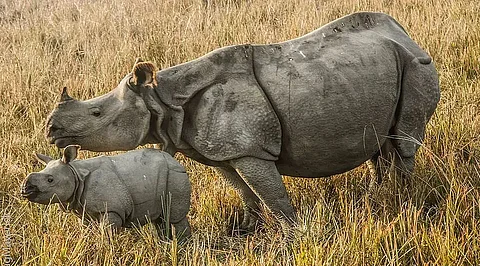
- Home
- Live Blog
- Breaking News
- Top Headlines
- Cities
- NE News
- Sentinel Media
- Sports
- Education
- Jobs

A front-page news story in the Sunday edition of this newspaper has highlighted the plight of Chakrasilla Wildlife Sanctuary, a very important wildlife reserve in lower Assam, where timber smugglers have felled a large number of valuable sal trees in recent months. In addition to this menace, Chakrasilla has also been facing encroachment, with the news report pointing out with concern that the Forest Department has failed to take adequate measures to protect the wildlife sanctuary. Falling under Dhubri and Kokrajhar districts, the 45.568 sq km Chakrasilla Wildlife Sanctuary is home to the highly endangered golden langurs, apart from having a large number of bird species, reptiles, and deer. Chakrasilla, in fact, is the second protected habitat for golden langurs in India. Moreover, two lakes inside the wildlife sanctuary—Diplai and Dheer— are integral to the ecosystem of the sanctuary and provide additional attractions for tourists. On the flora front, the lower hilly reaches of Chakrasilla are covered with sal coppice regeneration, while the middle and upper reaches are covered with mixed deciduous forests. Encroachment and illegal felling of trees, however, are not the problems of Chakrasilla alone. In fact, several wildlife sanctuaries in Assam have been facing these two problems in addition to poaching. The Burhachapori Wildlife Sanctuary in central Assam, with an area of 44 sq km, is one such protected area that has faced serious problems due to illegal tree felling, encroachment, and poaching. An integral part of the Laokhowa-Burachapori ecosystem, apart from being a notified buffer of the Kaziranga Tiger Reserve, the Burhachapori Wildlife Sanctuary is an ideal habitat for the Bengal florican and is considered a paradise for many migratory birds, apart from being a transit for rhino, tiger, leopard, wild buffalo, hog deer, wild pigs, and occasionally a herd of elephants. It was only in February of this year that a massive anti-encroachment drive was carried out in Burhachapori. Even in the heart of Guwahati, hardly 15 minutes drive from the Chief Minister’s office, large tracts of the 78.64 sq km Amchang Wildlife Sanctuary have been under encroachment, with the authorities concerned failing to evict the encroachers despite orders from the Gauhati High Court. The same is the case with other wildlife sanctuaries like Laokhowa and Bornadi, to name a few. The government must take a stand and bring to an end, once and for all, all kinds of illegal tree-felling, encroachment, and poaching activities in the protected forests, including the Wildlife Sanctuaries.